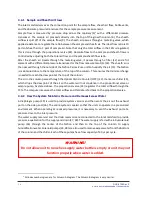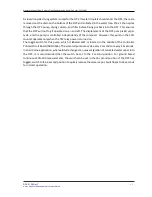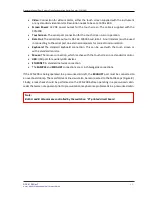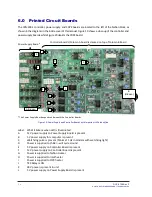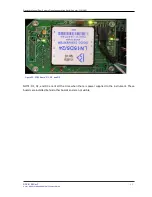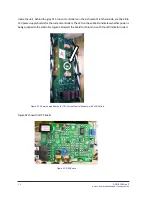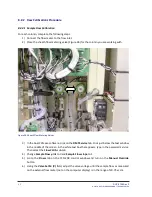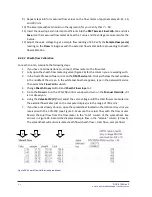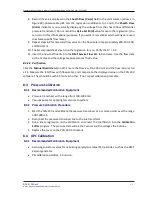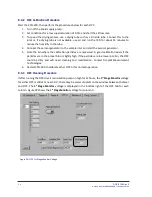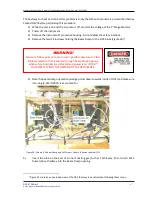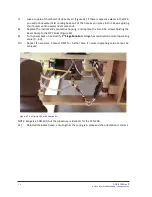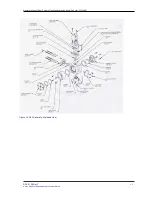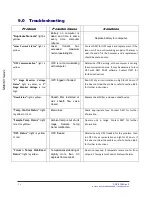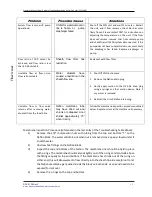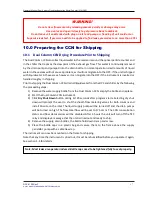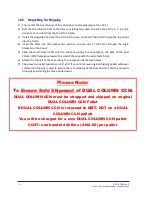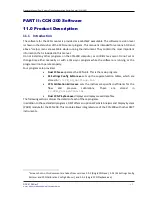
DOC-0128 Rev F
© 2017 DROPLET MEASUREMENT TECHNOLOGIES
4 4
9)
Repeat steps 6-8 for measured flow values on the flow meter of approximately 60, 45, 30,
and 20 Vccm.
10)
The Excel spreadsheet should run the regression for you. Verify that
r
2
> .99.
11)
Insert the new slope and intercept coefficients into the
DMT Service Flow Calib.
tab and click
Save.
Use the measured flow meter data as the Y value and the voltage measurement as the
X value.
12)
Adjust the valve voltage to get a sample flow reading of 45. Verify the
Sample Flow (vccm)
reading on the
Flows
tab agrees with the external flow meter before proceeding to sheath
flow calibration.
8.2.2.2
Sheath flow Calibration
For each column, complete the following steps.
1.
If you have not already done so, connect a flow meter to the flow inlet.
2.
Fully open the sheath flow metering valve (Figure 26) for the column you are working with.
3.
In the Dual CCN.exe software, click on the
DMT Service
tab. Click just below the text window
in the middle of the screen. In the white text box that appears, type in the password
Service
.
Then select the
Flow Calib.
sub-tab.
4.
Change
Sheath Flow y-int
to 0 and
Sheath Flow slope
to 1.
5.
Go to the
Flows
tab on the CCN-200 control window and turn on the
Manual Override
, if it
is not already on.
6.
Using the
Valve Set M (V)
field,
adjust the valve voltage until the total flow as measured on
the external flow meter (
not
on the computer display) is in the range of 750 vccm.
7.
If you have not already done so, open the spreadsheet located on the USB memory stick you
received with the CCN-200 (see Figure 3. Measure the actual flow with the flow meter.
Record the total flow from the flow meter in the “total” column of the spreadsheet. See
arrow 1 in Figure 28. Record the displayed sample flow in the “sample” column (arrow 2).
The spreadsheet will auto-calculate sheath flow (sheath flow = total flow – sample flow).
Figure 28: Sheath Flow Calibration Spreadsheet
1
2
3

